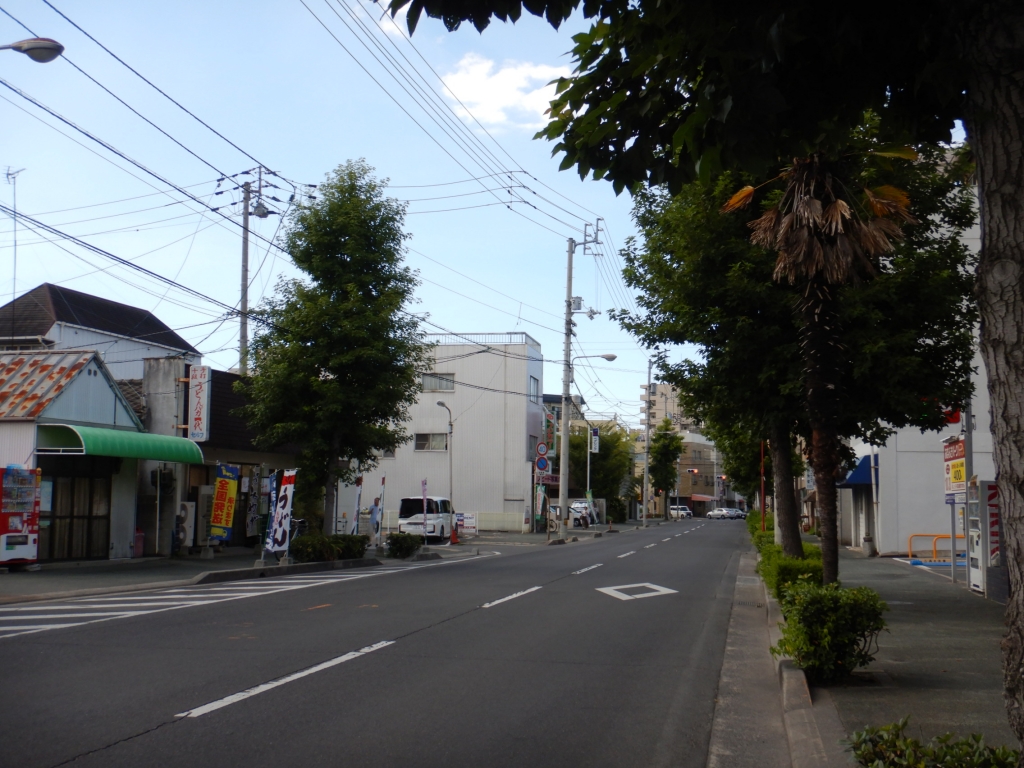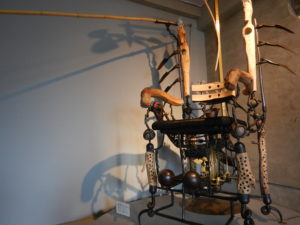去る、7月11日に、「地味なひとと行く 街歩きイベント」と称して、高松市内のゲストハウスと一緒に、街歩きイベントを開催しました。
https://www.facebook.com/events/637398526867477/
いつも視界には入るけど、その扉を開ける勇気がなかったレコード店に入ってみたり、とある和食屋と芸術家のエピソードに触れてみたりの時間でした。
We held a town walking event together with guesthouses in Takamatsu last month.
It was a good time to try to open the door of an unfamiliar used-record store and to listen to an episode of artists in a local restaurant.
さて、今、ゲストハウス若葉屋があるところは、高松市観光町です。
観光町って、いつ、どうやってその地名になった?
By the way, the address of Guest House Wakaba is “Kanko-cho (meaning: tourism town)” in Takamatsu.
When and why was this place named “tourist town”?
すぐ近所にある川中神社については、「昔、この神社は御坊川にあったんや」と、近所の老人から聞いたことがあります。
川にあったって、どういうこと?
An old neighbor has told me that the Kawanaka Shrine (Shintoism temple) near Wakabaya was in Gobogawa River.
What does it mean?
In the river?
いろいろと気になってきて、しかたがありません。
I can’t help research them!
私が通った松島小学校の校区については、歴史スポットにしっかりとした案内板が立てられ、風土記まで出版されていることがわかりました。
郷土史を読み漁ったり、ひとり街歩きをしたりしています。
I found that guidance boards stand by historical spots in Matsushima area, where I grew up and even a topography has been published there.
I read those historical books and walk around the city in this calm summer due to the pandemic.
今では交通量も多くないこの千代橋。
小学生の頃、私もこの橋を渡って、友だちの家に遊びに行った覚えがあります。
これが、高松の城下町から東の農村地帯へと抜ける旧街道の橋です。
This is Chiyobashi Bridge with little traffic today.
I used to cross this bridge to visit my friends in my childhood.
This is the bridge on the old highway between the castle town of Takamatsu and the eastern rural areas.
その千代橋近くに見える、朽ちかけた住居。
よく見ると、瓦には三つ葉葵の御紋が確認できます。
徳川家の親族である高松藩松平家が、ここを番所としていました。
This is an almost collapsing old house near the Chiyobashi Bridge.
On the roof tiles, we can see a crest of “Mitsuba Aoi”, the crest for Tokugawa shogunate (Edo era).
The Takamatsu Clan, whose lord family was relative of Tokugawa had used this house as the guardhouse on the highway.
さて、こちらは若葉屋のお客さんが朝うどんによく行かれる、うどんバカ一代(写真左)です。
この道の奥に見える信号機周辺には、「高橋」という橋があったようです。
今は6本の道路が交わる複雑な交差点ですが、これは、昔あった川の流れが関係しています。
Here is “Udon Bakaichidai”, a noodle restaurant, where many of our guests go for a local breakfast.
It seems that there was a bridge called “Takahashi” around the traffic lights at the end of this street.
That intersection is complex with six roads today and it originates from old river flow.
さらに北へ歩くと、ここだけアスファルトではなく、コンクリート製の歩道が伸びています。
周辺よりもやや高くなったこの一筋が、暗渠です。
When we walk further north, we reach the concrete sidewalk.
Only this sidewalk is paved with concrete, not asphalt, and slightly higher.
The river runs under this sidewalk today.
この暗渠の歩道が、さらに北では杣場川(せんばがわ)緑道に変わります。
途中、新橋という橋がこの緑道に今も架かっていますが、もう、地上から川は見えません。
Walking further north, the culvert sidewalk changes to “Sembagawa-River Green Walk”.
Shimbashi Bridge traverses over the Green Walk but the river can no longer be seen from the ground there.
高松城の東側を南北に流れていた杣場川の河口は東浜と呼ばれ、商人の港として賑わったといいます。
私の先祖が居を構えていたのが、この地と言われ、海運業を営んでいたようです。
In old days, this Sembagawa River had run from south to north on the east side of Takamatsu Castle and the harbor around its estuary was so lively with merchants.
It is said that my ancestors used to run a shipping business in that area.
その当時の屋号が、若葉屋です。
Their store name at that time was “Wakabaya”.













